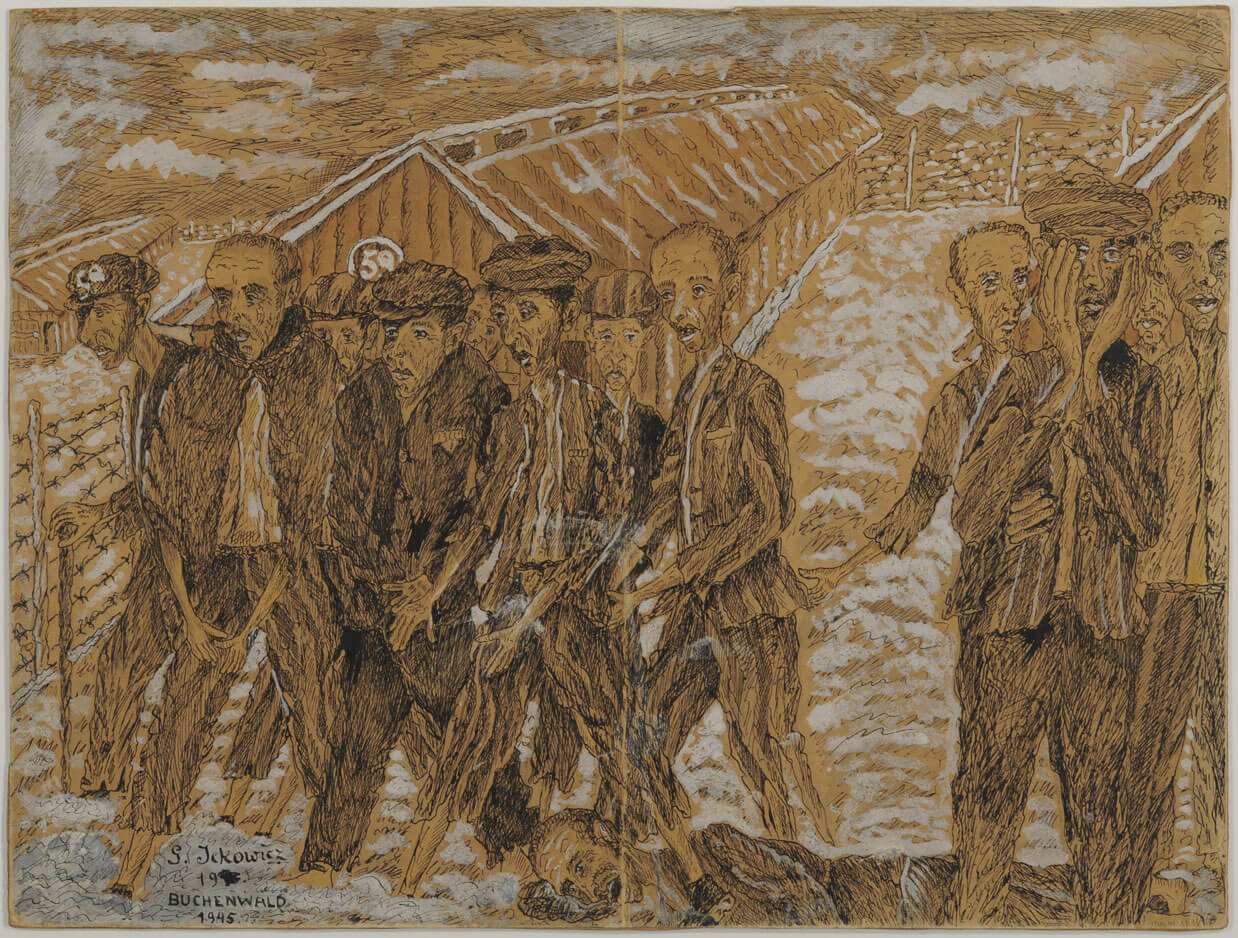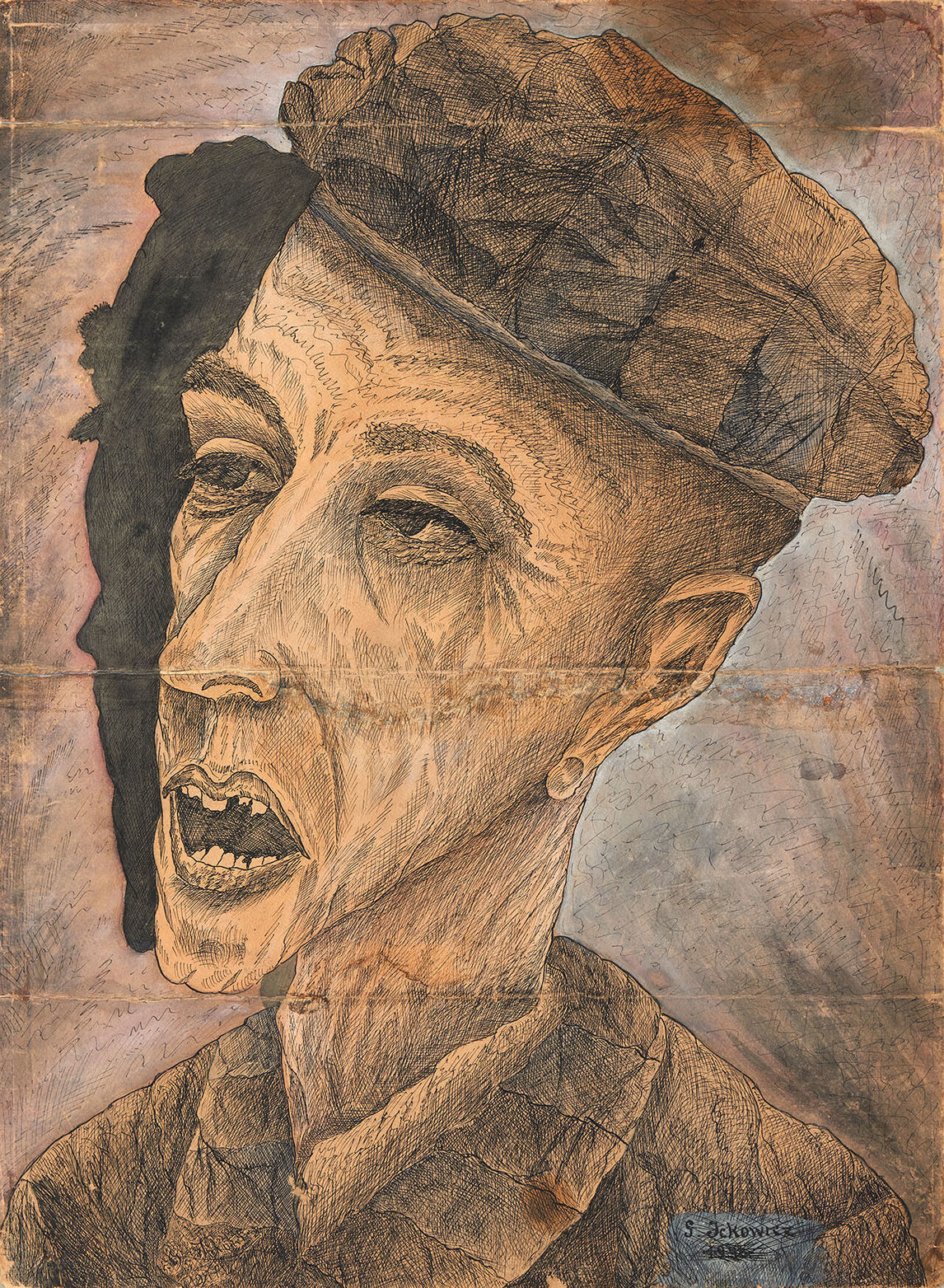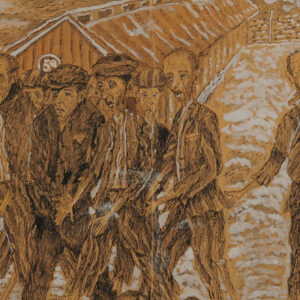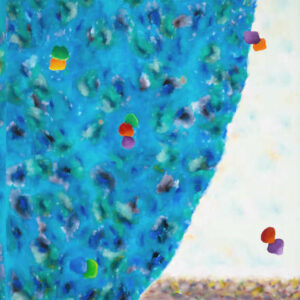Buchenwald 1944–45

Gershon Iskowitz, Buchenwald, 1944–45
Watercolour on paper, 39.5 x 52.3 cm
McMaster Museum of Art, Hamilton
Buchenwald is one of two surviving works made by Iskowitz while he was imprisoned in Nazi concentration camps. It depicts a group of prisoners, with a view of the barracks in the background. It is unlikely that Iskowitz’s drawing was meant to portray specific people or a specific moment, but the scene is observed from life and was done at a moment when the outcome of the war and his own fate was uncertain. Iskowitz later said that he did such works for his own sanity, using whatever materials he could find or scavenge, and kept them hidden to avoid detection by the guards. To consider Buchenwald only within “art terms” would be to diminish the reality of one person reflecting on the suffering of all prisoners in the camp. In this way, we can see the work as an act of hope in the face of unthinkable horror, even though it depicts “the condemned in the final stages of exhaustion.”

In this real-life context, Iskowitz’s drawing is a primary document—he was both witness and victim—but inevitably art comparisons have been made. The American Civil War, 1861–65, was the first conflict to be recorded by the newly invented camera. Yet photograph-documents may not have the same impact today because of the saturation of images in the contemporary, internet-focused world. Users can simply choose to look away from the horror depicted.
The graphic work of German artists who saw military action in the First World War provides another comparison: Der Krieg (The War), 1924, a suite of fifty etchings, drypoints, and aquatints by Otto Dix (1891–1969), for example, and single printworks done after the war by Erich Heckel (1883–1970) and George Grosz (1893–1959). Käthe Kollwitz (1867–1945), a committed socialist and pacifist who lost her youngest son in the First World War, produced a suite of seven woodcuts titled War, 1923. All these recorders of war atrocities were influenced by The Disasters of War engravings by Francisco Goya (1746–1828). Created between 1810 and 1820, the series depicted his impressions and horrific-satirical responses to the Peninsular War between France and Spain from 1808 to 1814.
Iskowitz’s Buchenwald was first exhibited in the 1954 Annual Exhibition of the Canadian Society of Graphic Art at the Art Gallery of Toronto (now Art Gallery of Ontario) and was included in his 1982 retrospective at the Art Gallery of Ontario.

 About the Author
About the Author
 More Online Art Books
More Online Art Books
 Acknowledgements
Acknowledgements